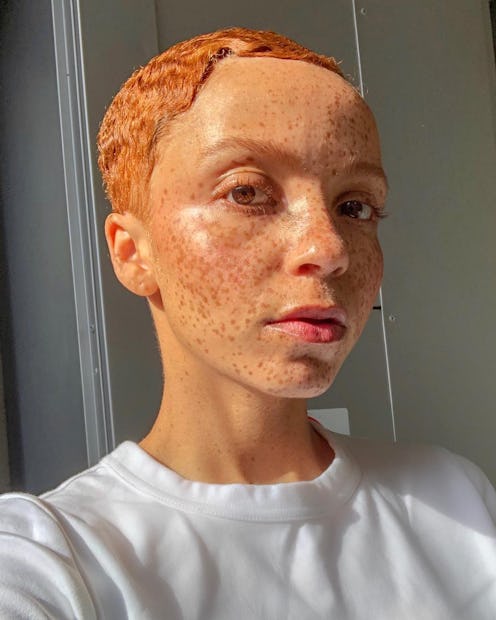Beauty
BeautyTok Says Oilplaning Is The Ticket To Smoother & Brighter Skin
What to know about the gentler alternative to dermaplaning.
If you’re on a mission to get extra glowy skin or a perfectly smooth foundation application — and basically achieve the Hailey Bieber glazed donut look — you might find what you’re looking for in oilplaning. With over 13 million views on TikTok, this skin-brightening trend is essentially dermaplaning — with a twist.
Dermaplaning is when you shave your face with a single-blade razor to remove vellus, aka peach fuzz, as well as the top layer of your skin, says Dr. Jodi LoGerfo, a dermatologist with the Orentreich Medical Group in New York City. It’s meant to exfoliate dead skin cells so that your complexion looks smoother and brighter, she tells Bustle. And, as with any form of manual exfoliation, the gentle scraping action also helps increase cell turnover to leave your skin feeling buttery soft.
Oilplaning is the exact same thing, but instead of shaving your face while your skin is dry, you apply a thin layer of oil first, says Cassi Dambrogio, a skin revision therapist and owner of skin clinic Facepop. The oil acts as a glide so that your face razor runs across your skin with ease, she explains, instead of snagging or scratching.
According to LoGerfo, dermaplaning and oilplaning offer all the same results, except the latter tends to be the better option for folks who have dry skin. “Oilplaning can help give you smoother dermaplaning results by preventing excessive dryness or sensitivity,” she says. Slick on a face oil that contains ingredients like squalane, hyaluronic acid, or vitamin E, and you’ll get all of its moisturizing benefits, too.
To give oilplaning a try at home, cleanse and dry your face thoroughly. Then apply just enough face oil to give your skin some slip without making it so slick that you lose control of the blade, Dambrogio says.
Hold your skin taught with one hand and hold the dermaplaning razor in the other, LeGerfo says. Aim for a 45-degree angle between the blade and your skin. From there, move the blade over your skin with soft, light, short strokes. Go in a downward motion and avoid any skin that’s broken or irritated. (No shaving over pimples!) When you’re done, LoGerfo recommends washing your face with a mild cleanser.
While it depends on how quickly your hair grows back, Dambrogio recommends oilplaning about every two to three weeks for best results. It’s also something you might consider doing before special events, she adds, especially if you want your makeup to go on more smoothly. Oh, and your peach fuzz won’t grow back thicker. “Your hair will grow back normal,” Dambrogio assures.
Note that you should skip oilplaning if you have acne, eczema, psoriasis, rosacea, excessively irritated skin, or a skin infection, LoGerfo says. Beyond that, the pros say it’s fair game to try at home. When you’ve finished going over your entire face, simply apply the rest of your skin care products — including sunscreen, of course — and get on with your day.
Studies referenced:
Bedford, L. (2022). Skin Resurfacing Dermabrasion. In: StatPearls [Internet]. Treasure Island (FL): StatPearls Publishing; 2022 Jan-. Available from: https://www.ncbi.nlm.nih.gov/books/NBK558955/.
Rodan, K. (2016). Skincare Bootcamp: The Evolving Role of Skincare. Plastic and Reconstructive Surgery Global Open, 4(12 Suppl). https://doi.org/10.1097/GOX.0000000000001152
Experts:
Dr. Jodi LoGerfo, dermatologist with Orentreich Medical Group
Cassi Dambrogio, skin revision therapist
This article was originally published on
